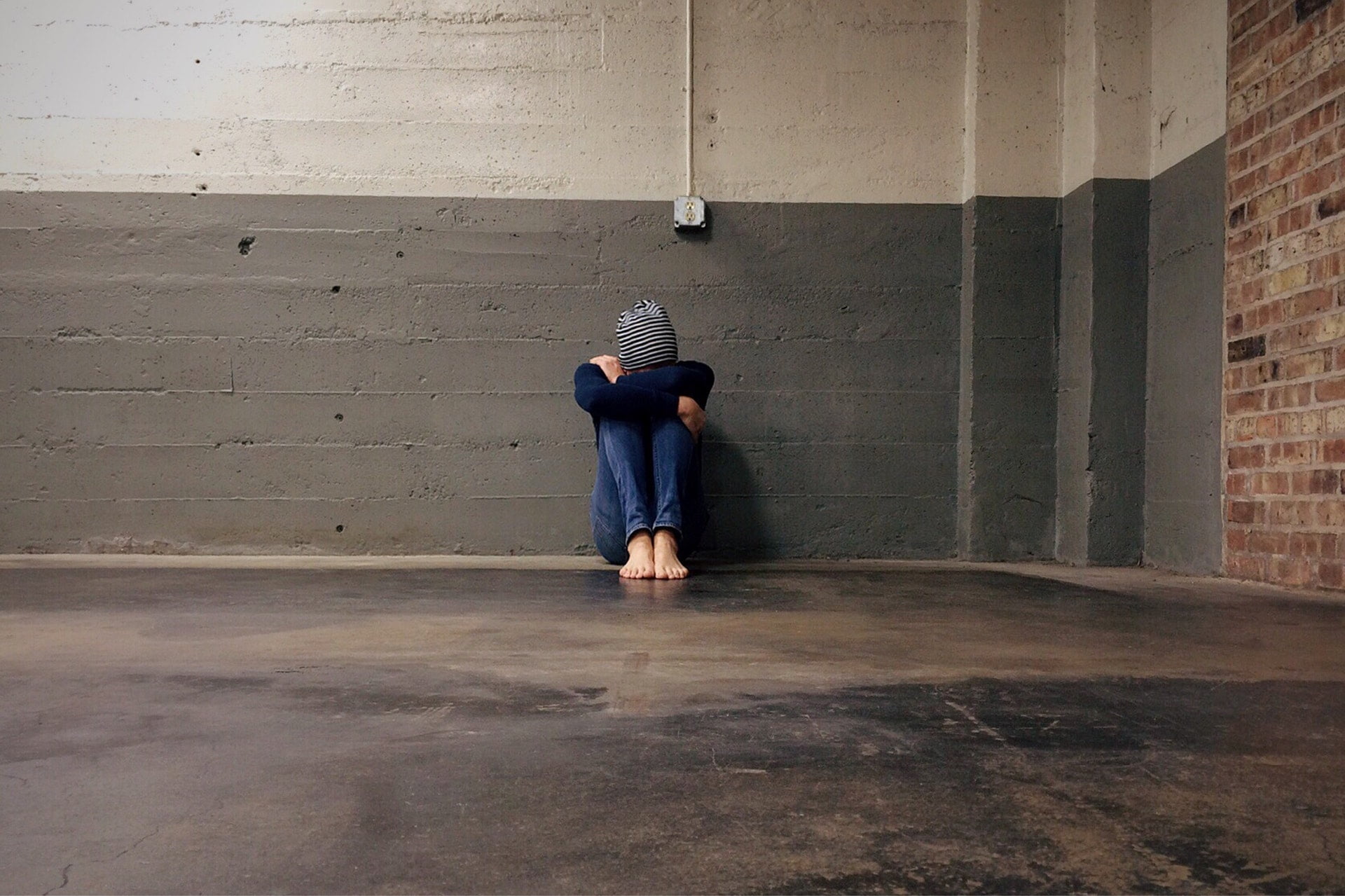What comes to mind when the word trauma is spoken? You may immediately think of a child who has been physically or sexually abused or maybe someone who has been involved in an active-shooter situation. These are all legitimate examples, but trauma is much more complex. The purpose of this article is to explain trauma in detail and how to heal if trauma is a part of your story.
Trauma Explained
 Unfortunately, we live in a word full of traumatic experiences. According to the World Health Organization (WHO), 70.4% of people surveyed experienced trauma during their lifetime. When most people think of trauma, thoughts of sexual assault, military combat, physical abuse or near-death situations come to mind.
Unfortunately, we live in a word full of traumatic experiences. According to the World Health Organization (WHO), 70.4% of people surveyed experienced trauma during their lifetime. When most people think of trauma, thoughts of sexual assault, military combat, physical abuse or near-death situations come to mind.
Trauma doesn’t always evolve into PTSD. Normally, PTSD is attached to highly interpersonal trauma like rape. It’s even possible for trauma to be the result of serious surgery, childhood neglect, a painful divorce, the death of a loved one or a major life change.
The emotions that accompany traumatic situations can interfere with having a healthy personal and professional life. Trauma can influence your relationships, spiritual beliefs, and emotional responses. There’s usually no area that isn’t somehow touched by the effects of trauma.
There are symptoms of trauma that you should be aware of. This list isn’t exhaustive, but just to give you an idea of commonly experienced symptoms.
- Shock
- Emotional numbness
- Disconnected from reality
- Paralyzing anxiety
- Consuming fear
- Overwhelming guilt
- Indecisiveness
- Inability to concentrate
- Easily frightened
- Tendency to isolate
- Feelings of helplessness
- Sorrow
- Extreme moods
- Loss of trust in people
- Nightmares or flashbacks
- Insomnia
- Accelerated heartbeat
- Body aches (including head and stomach)
- Loss of interest in eating
Post Traumatic Stress Disorder (PTSD) Defined
According to the American Psychiatric Association, Posttraumatic stress disorder (PTSD) is a psychiatric disorder that can occur in people who have experienced or witnessed a traumatic event. Those events are defined as natural disasters, serious accidents, terrorist acts, military combat, rape or other violent personal assaults.
Even recurring exposure to forms of traumatic events can cause trauma (e.g., first responder). Symptoms of PTSD often develop years after the trauma occurred and can be quite the shock.
PTSD Symptoms
 PTSD symptoms are numerous and can include anything from angry outbursts and substance abuse to intrusive memories and sudden nightmares about the traumatic event. PTSD can cause a person to avoid any event or environment that may trigger memories of a traumatic experience.
PTSD symptoms are numerous and can include anything from angry outbursts and substance abuse to intrusive memories and sudden nightmares about the traumatic event. PTSD can cause a person to avoid any event or environment that may trigger memories of a traumatic experience.
For example, a war veteran might avoid watching firework displays on the Fourth of July due to the noise triggering memories of a time in combat. A woman may avoid visiting the home where childhood abuse happened.
Complex Trauma
Most people are familiar with PTSD, but, surprisingly, this is actually not the most common trauma diagnosis. Researches have found that separation anxiety disorder and defiant disorder are some of the most common diagnoses when dealing with victims of trauma. Trauma during childhood causes challenges in regulating emotions and hinders the attachment system.
Complex trauma is when there are many traumatic events that keep building on each other over a certain period of time. Most cases do occur in childhood such as habitual sexual or physical abuse or neglect.
You may have heard of the relatively well-known ACE (adverse childhood experiences) study that was conducted by Kaiser Permanente and the Centers for Disease Control and Prevention (Feletti, et al., 1998). ACE examined all forms of childhood abuse, childhood neglect, domestic violence, caregiver separation, and having a household member with a mental illness or problem with drugs and alcohol.
The ACE study revealed a strong relationship between adverse childhood experiences and a higher possibility to be susceptible to depression, sexual promiscuity, obesity, suicide and drug, alcohol and cigarette use.
The higher the number of adverse childhood experiences, the more negative outcomes. Those that conducted the study discovered these negative childhood experiences were linked to risk factors for common causes of death in adults.
Trauma during childhood has an impact on intellectual, emotional and physical development. The stress response system can be altered due to the child focusing on their need for safety rather than on regular growth activities. This means they are constantly at a heightened state instead of only when there’s an imminent threat. If you live in this state for a long period of time it can have negative implications for your overall health and ability to function.
People living with hyperarousal symptoms are always on the lookout for danger or are frightened easily. Those that have experienced an active-shooter situation may have hyperarousal for years after the situation.
Finding Effective Trauma Healing
 Trauma healing is not an overnight process. Trauma has many layers and it takes patience to work through every step toward healing. If you are experiencing the symptoms described above and have experienced a traumatic event, there are a few places to focus on to help cope.
Trauma healing is not an overnight process. Trauma has many layers and it takes patience to work through every step toward healing. If you are experiencing the symptoms described above and have experienced a traumatic event, there are a few places to focus on to help cope.
Howard Bath wrote The Three Pillars of Trauma-Informed Care which focuses on safety, connections and emotion management during the trauma healing process.
1) Safety
When a person experienced trauma his feelings of security were shattered. That’s why it’s even more important to create a safe environment where the person suffering from trauma can share experiences and begin to process what happened to him or her. Those feelings of safety were stripped away from them at some point but finding a safe place to open up about emotions and thoughts is critical in the healing journey.
Safety can be created by offering a child control in decision making. If their life felt out of control during the time of the abuse, the child can benefit from being granted some control over his or her life. Another way to form a safe environment is by developing consistency or a routine in life. This child can learn to relax over time knowing there is stability.
2) Connections
Relationships are necessary for a fruitful, healthy life. Unfortunately, trauma sometimes is a result of a trusted family member or friend crossing a physical boundary. Thus, it can be difficult to trust again or have emotional and physical intimacy with others. It’s normal to gravitate toward isolation, but this is a gateway to depression.
Healing doesn’t happen in isolation. Bringing what happened in the dark to the light is one component of healing. It lightens the burden you’ve carried as you share among people you trust. It takes courage to speak up and often the bravest thing we can do is let people into our pain.
3) Managing Emotions
If you’ve experienced trauma, you may have a harder time managing emotions. Mood swings and angry outbursts become normal for those living with PTSD or other diagnoses. Emotions are real, but they aren’t reliable.
Here are a few ways you can begin to manage your emotions to promote trauma healing:
Breathing techniques
Anxiety really messes up our breathing. You get less oxygen to your body when you take shallow breaths caused by anxious thoughts. As a result, this increases the intensity of anxiety. Taking slow, deep breaths is one way to combat anxiety and calm down. There are many different breathing techniques available online that you can test out in your daily life to see what is the most beneficial.
Mindfulness
Your mind is a battlefield of twisted thoughts. One thought can lead to another and soon you are frozen on your bed unable to make a move. It’s important to learn to control your thinking, instead of letting it control you. Learn how to take your thoughts captive, speak life into your situations and reject the lies invading your mind.
Relaxation
Discovering ways to relax is paramount. Living in constant fight or flight mode takes a toll on your body and can have negative health implications. Maybe your way to relax is painting, dance, yoga, or going to the spa. Find out what works for you and begin to make relaxation a daily or weekly practice.
Physical activity and Nutrition
 Joining a gym or fitness class can be a wonderful outlet for your emotions. It’s equally important to focus on your nutrition and the amount of sleep you are getting every night. Avoid trying to use alcohol to numb your pain or escape from your emotions.
Joining a gym or fitness class can be a wonderful outlet for your emotions. It’s equally important to focus on your nutrition and the amount of sleep you are getting every night. Avoid trying to use alcohol to numb your pain or escape from your emotions.
Journaling
Journaling provides a way for you to release bottled up emotions and thoughts. Putting pen to paper is its own form of therapy.
Grounding
In a moment of panic, you may need to ground yourself in a tangible way. Feel your feet on the ground, look at the things around you, and say aloud where you are.
Healing is not a quick process that can be accomplished in a few steps. Some days you might feel on top of the world, and other days you might feel like you’ve lost your will to persevere.
If a person or place triggers unwelcomed emotions, this does not mean you aren’t making progress or that you’ve moved in the opposite direction.
These are more opportunities for growth. It’s important to seek professional help for your trauma symptoms if they are negatively impacting your quality of life. Yes, healing can take place over time, but a trusted counselor can support you as you heal from trauma and go on to live an abundant life.
Treatment Methods for Trauma Healing
Two possible effective treatments for trauma healing include Eye Movement Desensitization and Reprocessing (EMDR) and Trauma-Focused Cognitive Behavioral Therapy (TF-CBT).
Eye Movement Desensitization and Reprocessing (EMDR)
Memories from trauma can be stored in an unprocessed and non-adaptive state. Extreme stress or a lack of development ability to process trauma can cause incomplete processing of trauma. EMDR therapy focused on three time periods: the past, present, and future. EMDR therapy uses bilateral stimulation like left-to-right eye movements to enable memories to become unstuck and reprocessed into an adaptive memory.
The unprocessed traumatic memories are in their original states with all thoughts, feelings, images and body sensations that occurred during the traumatic event. EMDR therapy proves that the mind can heal from psychological trauma similar to how the body recovers from physical trauma.
Trauma-Focused Cognitive-Behavior Therapy (TF-CBT)
Trauma-Focused Cognitive-Behavior Therapy is designed to help those who have been traumatized to navigate through the thoughts and emotions associated with the trauma. TF-CT may include relaxation training, discovering how to regulate emotions, examining the thoughts attached to the trauma, and creating a trauma narrative. This therapy can occur in group, family or individual settings.
If you are finding the trauma healing process to be difficult, you are not alone. You can experience recovery and there’s hope for your future. Professional therapists are ready to go through this healing journey alongside you.
“Cry” Courtesy of Luis Galvez, Unsplash.com, CC0 License; “Alone,” courtesy of pixabay.com, pexels.com, CC0 License; “Snow,” courtesy of Andre Chivinski, Flickr Creative Commons, Public Domain; “Sunlight,” courtesy of Ricardo Gomez Angel, unsplash.com, CC0 License



